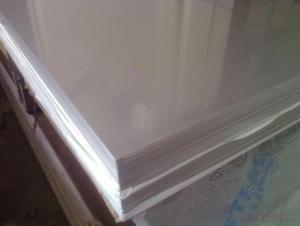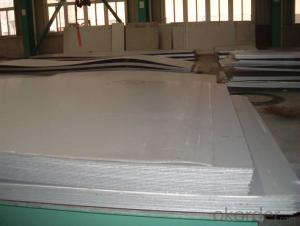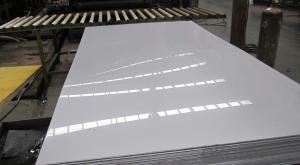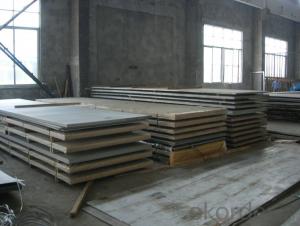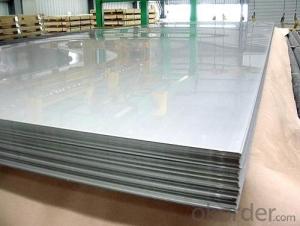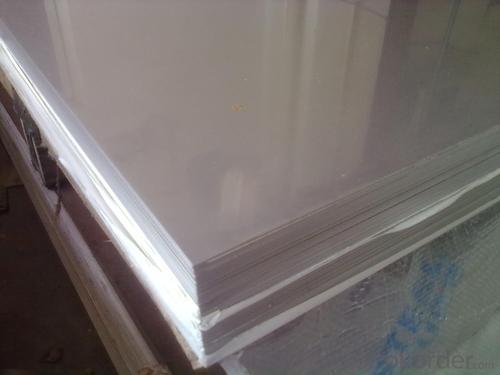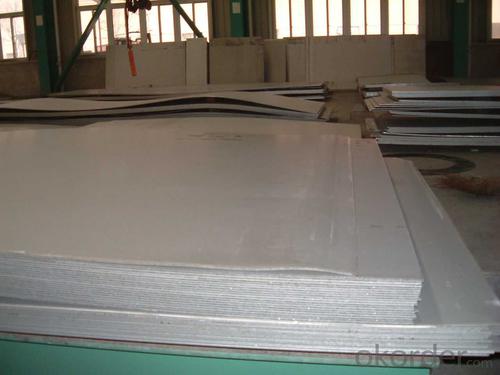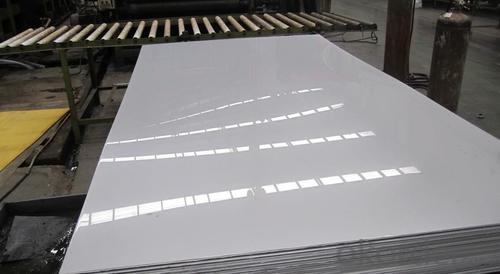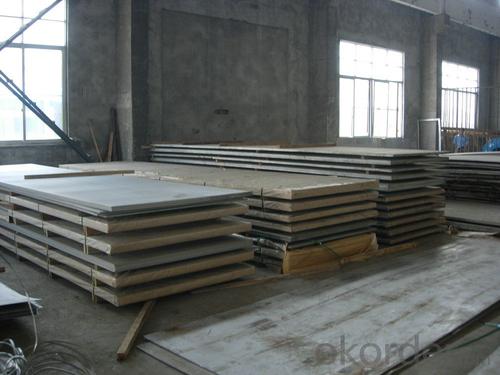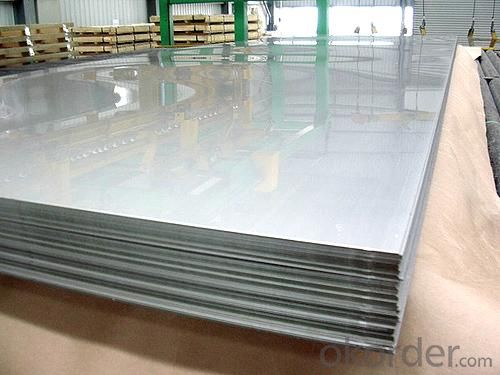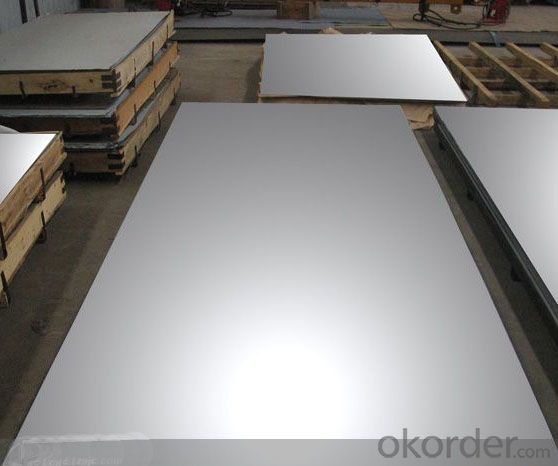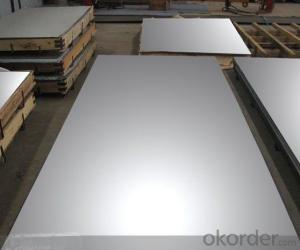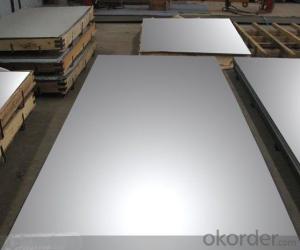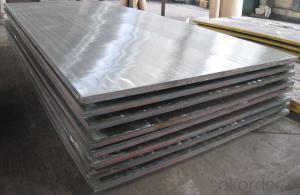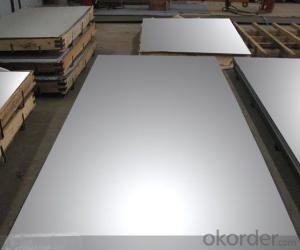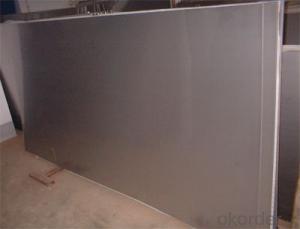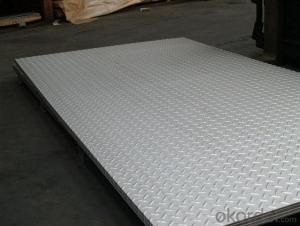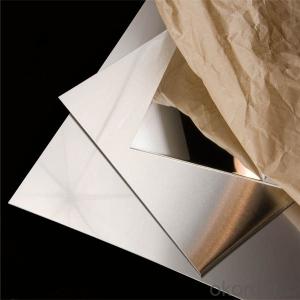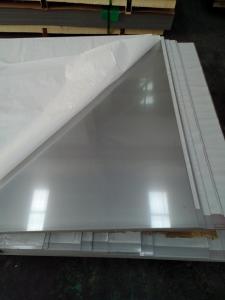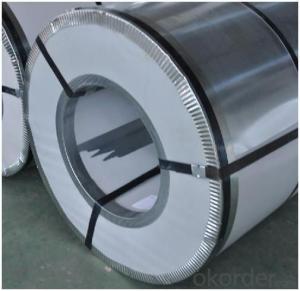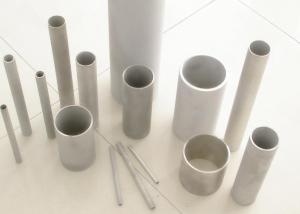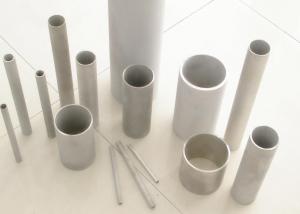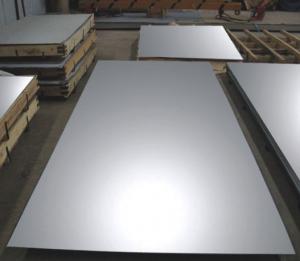Stainless Steel plate and sheet 304 with plenty stock
- Loading Port:
- Shanghai
- Payment Terms:
- TT OR LC
- Min Order Qty:
- 500 m.t.
- Supply Capability:
- 5000000 m.t./month
OKorder Service Pledge
OKorder Financial Service
You Might Also Like
Hot sale stainless steel sheet 201/202/304/304l/316/316l/430
Description of Stainless Steel Sheet:
Description | steel sheet,hot rolled steel sheet,cold rolled steel sheet, steel sheet,sheet,steel plate |
Standard | ASME, ASTM, EN ,BS,GB,DIN, JIS etc |
Application | Steel sheet applies to construction field, ships building industry, petroleum & chemical industries, war and electricity industries, food processing and medical industry, boiler heat exchanger, machinery and hardware fields. |
Packaging | Standard export sea-worthy packing |
Delivery time | 10-30 days |
Quality | No.1 |
Productivity | 500 tons/Day |
Note | Our company has cooperative relation between the domestic agents. Stainless steel sheet can be made accordingto the customers requirements. Fasten delivery. Quality assured. |
Contacts | If you have any question,please feel free contact me. |
Stainless steel sheet surface finish characteristics
Surface finish | Characteristics and application |
2B | The surface brightness and flatness of no2B is better than no2D. then through a special surface treatment to improve its mechanical properties,No2B could nearly satisfy comprehensive uses. |
No.1 | Polished with abrasive belt of grit#100-#200, have better brightness with discontinuous coarse stria, used as inner and external ornaments for building, electrical appliances and kitchen utensils etc. |
No.4 | Polished with abrasive belt of grit #150-#180,have better brightness with discontinuous coarse stria, but thinner than No3, are used as bathtub buildings inner and external ornaments electrical appliances kitchen utensils and food processing equipment etc. |
HL | Polished with abrasive belt of grit #150-#320 on the NO.4 finish and has continuous streaks, mainly used as buildings ornaments elevators, door of building, frontal plate etc. |
BA | Cold rolled, bright annealed and skin-passed, the product have excellent brightness and good reflexivity like mirror, kitchen apparatus, ornament etc. |
8K | The product have excellent brightness and prefer reflexivity can to be the mirror. |
Main Features of stainless steel sheet :
•Escalator, Elevator, Doors
•Furniture
•Production tools, Kitchen appliances, freezers, cold rooms
•Auto Parts
•Machinery and Packaging
•Equipment and Medical devices
•Transport system
Product Details:
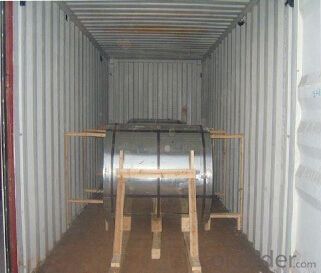
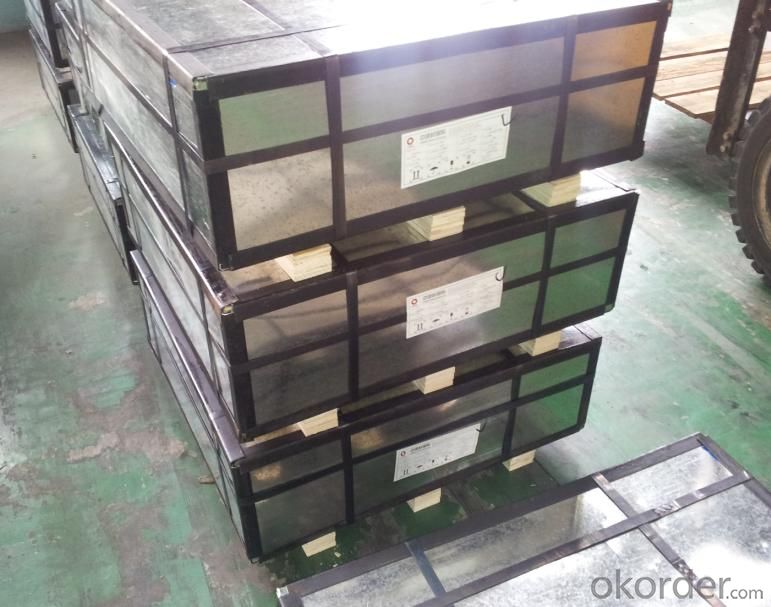
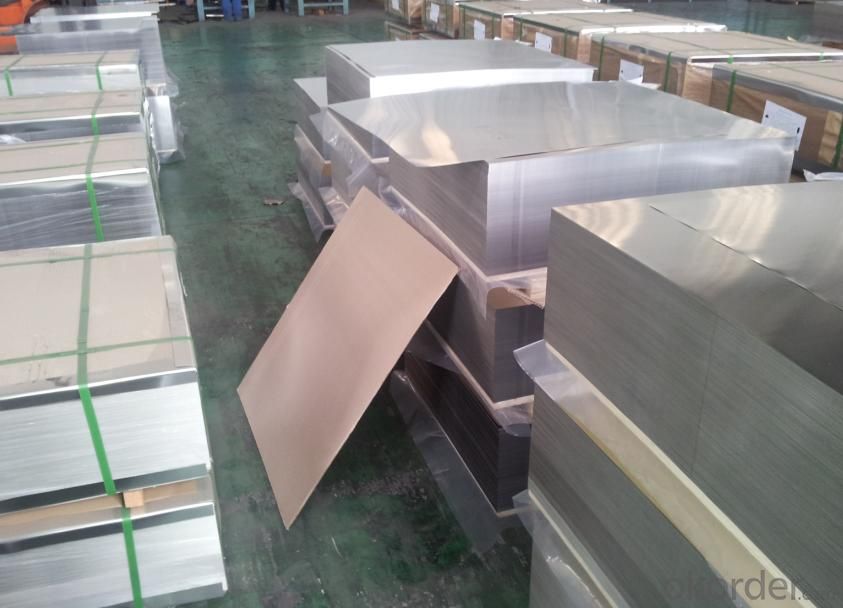
Sandard Seaworth Packing(wooden packing with water proof paper)
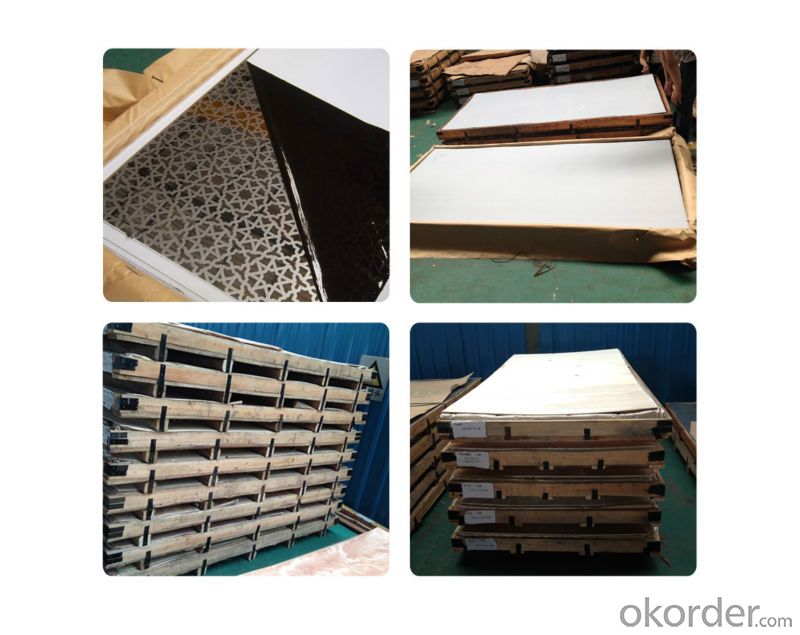
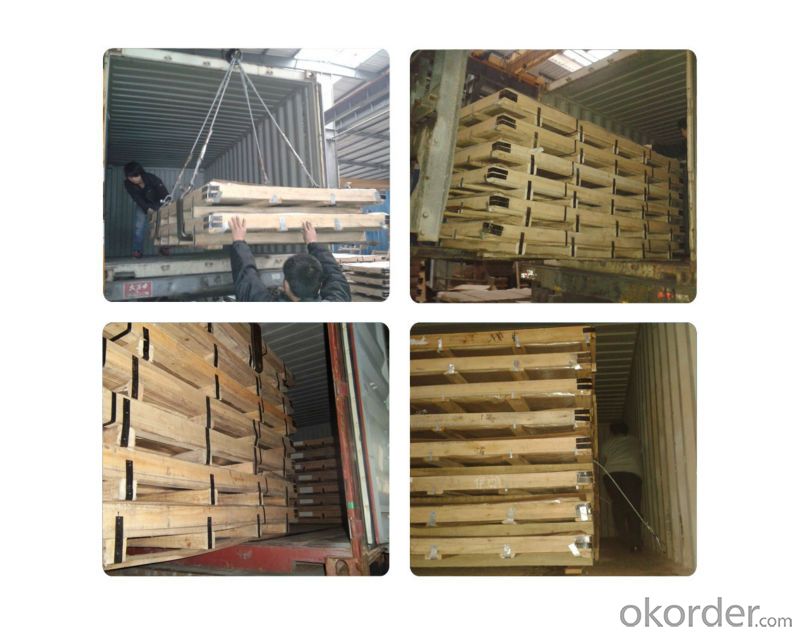
FAQ:
1. What's the quality?
very fine
2. How long get reply?
within 24 hours
If you have any question about stainless steel sheets,donot forget to sending the email to Us! You will get the competitive Price and have a very good experience about the Buying Process! CNBM International Corporation is always your trustful friend!
- Q: Can stainless steel sheets be used for outdoor applications?
- Certainly, outdoor applications can utilize stainless steel sheets. Due to its exceptional resistance to corrosion, stainless steel emerges as an ideal material for outdoor use. It can endure exposure to moisture, saltwater, and harsh weather conditions without succumbing to rust or deterioration. Outdoor structures like fences, handrails, roofs, and cladding regularly employ stainless steel sheets. Furthermore, outdoor appliances, equipment, and decorative elements also benefit from their utilization. Moreover, stainless steel sheets can be painted or coated to amplify their resistance against outdoor elements and match desired aesthetics. In summary, stainless steel sheets prove to be a robust and dependable option for outdoor applications.
- Q: Are stainless steel sheets suitable for food processing or medical applications?
- Yes, stainless steel sheets are highly suitable for both food processing and medical applications. Stainless steel is corrosion-resistant, durable, and easy to clean, making it ideal for environments where hygiene and cleanliness are crucial. It is also non-reactive with food or medical substances, ensuring that it does not contaminate or alter the properties of the materials it comes into contact with. Additionally, stainless steel's strength and resistance to extreme temperatures make it suitable for various processing and sterilization methods required in these industries.
- Q: What is the thickness range of stainless steel sheets?
- The thickness range of stainless steel sheets can vary depending on the specific grade and application. However, typically stainless steel sheets are available in thicknesses ranging from 0.4mm to 6mm. Additionally, there are specialized stainless steel sheets available in thinner gauges, such as foil sheets that can be as thin as 0.02mm. On the other hand, for heavy-duty applications, stainless steel sheets can be as thick as 50mm or more. Ultimately, the desired thickness of a stainless steel sheet will depend on the intended use, structural requirements, and aesthetic preferences.
- Q: What are the different types of stainless steel sheet patterns?
- There are several different types of stainless steel sheet patterns, including plain, diamond, honeycomb, chequered, and linen. These patterns offer various aesthetic options for different applications and design preferences.
- Q: Can stainless steel sheets be used for exterior cladding?
- Indeed, exterior cladding can utilize stainless steel sheets. The robustness and resistance to corrosion of stainless steel make it appropriate for various purposes, including cladding. Stainless steel sheets present exceptional endurance against weathering, UV rays, and extreme temperatures, rendering them perfect for external usage. They can endure severe environmental conditions, such as heavy rain, snow, and strong winds, without deteriorating or losing their aesthetic charm. Moreover, stainless steel sheets are available in an extensive array of finishes, allowing for customization and design adaptability. Whether for residential, commercial, or industrial edifices, stainless steel cladding offers a durable and visually pleasing solution.
- Q: Can stainless steel sheets be used for escalator steps?
- Yes, stainless steel sheets can be used for escalator steps. Stainless steel is a popular choice for escalator steps because it is durable, corrosion-resistant, and easy to clean. It also provides a sleek and modern appearance.
- Q: Can stainless steel sheets be used for architectural columns?
- Yes, stainless steel sheets can be used for architectural columns. Stainless steel is a highly durable and versatile material that offers excellent resistance to corrosion, making it suitable for both indoor and outdoor applications. The sleek and modern appearance of stainless steel also adds an aesthetic appeal to architectural designs. Additionally, stainless steel sheets can be customized to various sizes and shapes, allowing for flexibility in column design. Whether it is for residential, commercial, or industrial projects, stainless steel sheets are a popular choice for architectural columns due to their strength, longevity, and visual appeal.
- Q: What are the different types of stainless steel sheet edge treatments available?
- Various edge treatments are available for stainless steel sheets, each offering distinct advantages and aesthetic options. 1. The mill edge treatment is the most commonly used, where the stainless steel sheet is produced with an unfinished, straight edge. It is cost-effective and suitable for applications that prioritize functionality over appearance. 2. The slit edge treatment involves cutting the stainless steel sheet to the desired width, resulting in a smooth edge. Slit edge sheets are commonly used in industries like food processing and pharmaceuticals, where a clean, burr-free finish is necessary. 3. The deburred edge treatment focuses on removing any burrs or sharp edges from the stainless steel sheet, leaving a smooth and safe edge. It is often employed in architectural or automotive applications where safety is a concern. 4. The rolled edge treatment involves bending the stainless steel sheet to create a rounded edge. This treatment is popular in applications where safety and aesthetics are important, such as kitchen appliances or decorative pieces. 5. The beveled edge treatment refers to cutting the stainless steel sheet at an angle, creating a diagonal edge. Beveled edges are commonly used in architectural applications to achieve a smooth transition between different materials or enhance the overall design. These examples illustrate the range of stainless steel sheet edge treatments available. The choice of treatment depends on specific application requirements, including functionality, safety, and aesthetics.
- Q: Stainless steel thermos cup 304 and 201 material what is the difference?
- 304 stainless steel corrosion resistance, high prices: 201 and 304 stainless steel material in essence difference, mainly in the elements contained in the two are not the same. 304 stainless steel corrosion resistance and stamping performance far better than 201, and the 304 stainless steel is generally used in the complex environment, need strong resistance to corrosion for 201 place, environmental requirements are not very high, or the stainless steel demand is not high place.
- Q: How do you prevent crevice corrosion on stainless steel sheets?
- To minimize the occurrence of crevice corrosion on stainless steel sheets, there are several steps that can be taken: 1. Maintaining cleanliness and performing regular maintenance: It is crucial to keep the stainless steel sheets clean and free from any contaminants. Regular cleaning using mild detergent and water, followed by thorough rinsing and drying, helps eliminate potential corrosive agents. 2. Avoiding the accumulation of debris or moisture: Ensuring that there are no crevices or gaps where debris or moisture can accumulate is essential. Regular inspection and maintenance can help identify and rectify any such areas. Additionally, maintaining effective drainage systems and preventing water pooling can help prevent moisture accumulation, which contributes to crevice corrosion. 3. Applying protective coatings: The application of protective coatings on the stainless steel sheets provides an additional barrier against crevice corrosion. Various types of coatings, such as paints, epoxy coatings, or specialized corrosion-resistant coatings designed for stainless steel, are available. 4. Using suitable gaskets and sealants: When fastening or joining stainless steel sheets, it is important to utilize compatible gaskets and sealants. These components should be corrosion-resistant and act as barriers against moisture and contaminants. Silicone-based sealants or gaskets made from PTFE (polytetrafluoroethylene) are commonly employed for this purpose. 5. Preventing galvanic corrosion: Galvanic corrosion can arise when dissimilar metals come into contact with each other in the presence of an electrolyte, leading to corrosion of the less noble metal. To prevent this, it is crucial to avoid using dissimilar metals in close proximity to stainless steel sheets. When necessary, insulating materials or coatings can be used to separate them. 6. Conducting regular inspections and maintenance: Regularly inspecting the stainless steel sheets for any indications of corrosion and promptly addressing them is crucial in preventing crevice corrosion. This includes checking for signs of pitting, discoloration, or degradation of the protective coatings. Any identified issues should be promptly resolved to prevent further corrosion. By adhering to these preventive measures, crevice corrosion on stainless steel sheets can be effectively minimized, thus ensuring their longevity and preserving their aesthetic appeal.
Send your message to us
Stainless Steel plate and sheet 304 with plenty stock
- Loading Port:
- Shanghai
- Payment Terms:
- TT OR LC
- Min Order Qty:
- 500 m.t.
- Supply Capability:
- 5000000 m.t./month
OKorder Service Pledge
OKorder Financial Service
Similar products
Hot products
Hot Searches
Related keywords
